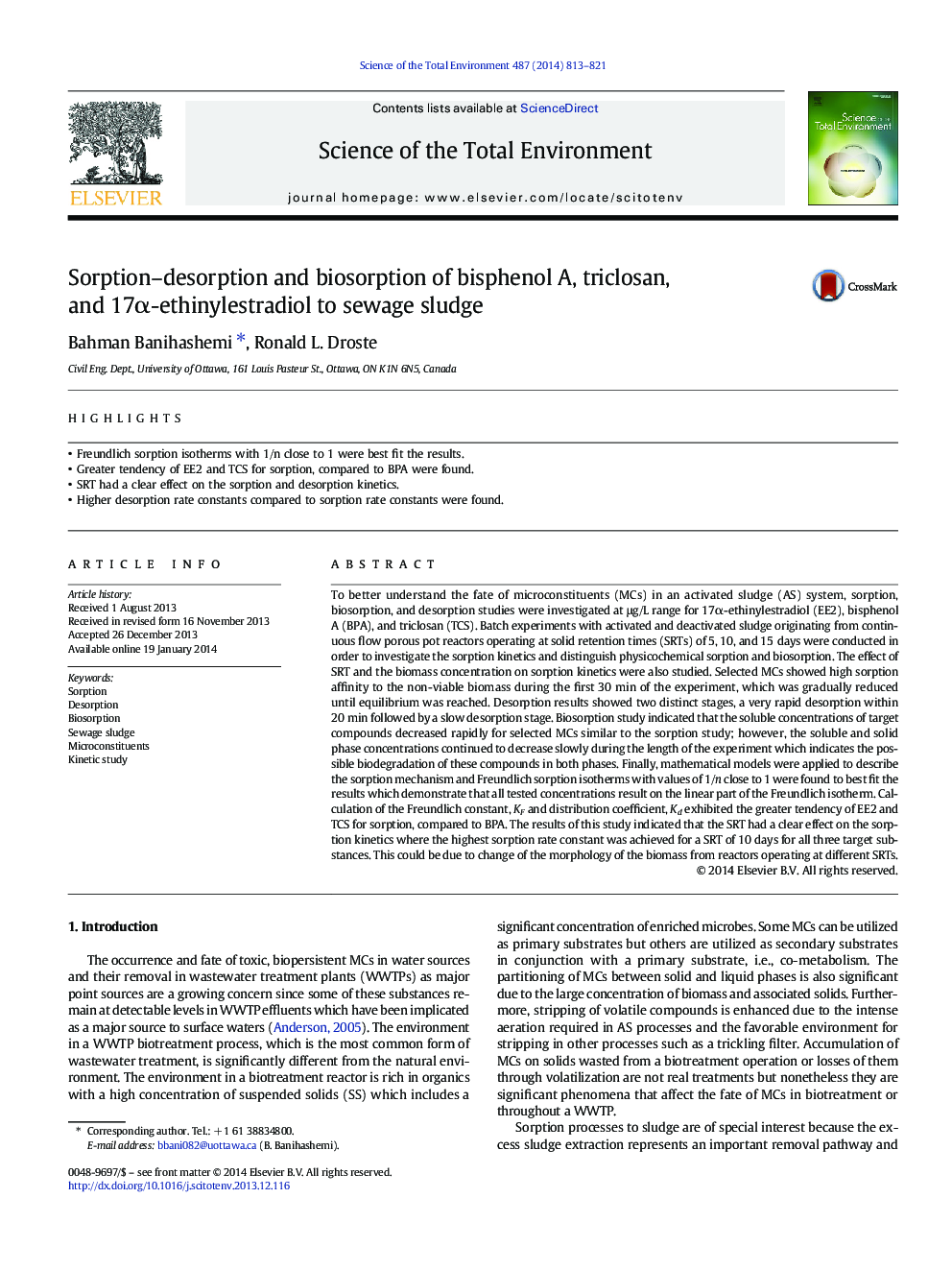| کد مقاله | کد نشریه | سال انتشار | مقاله انگلیسی | نسخه تمام متن |
|---|---|---|---|---|
| 6330104 | 1619782 | 2014 | 9 صفحه PDF | دانلود رایگان |
عنوان انگلیسی مقاله ISI
Sorption-desorption and biosorption of bisphenol A, triclosan, and 17α-ethinylestradiol to sewage sludge
دانلود مقاله + سفارش ترجمه
دانلود مقاله ISI انگلیسی
رایگان برای ایرانیان
کلمات کلیدی
موضوعات مرتبط
علوم زیستی و بیوفناوری
علوم محیط زیست
شیمی زیست محیطی
پیش نمایش صفحه اول مقاله

چکیده انگلیسی
To better understand the fate of microconstituents (MCs) in an activated sludge (AS) system, sorption, biosorption, and desorption studies were investigated at μg/L range for 17α-ethinylestradiol (EE2), bisphenol A (BPA), and triclosan (TCS). Batch experiments with activated and deactivated sludge originating from continuous flow porous pot reactors operating at solid retention times (SRTs) of 5, 10, and 15 days were conducted in order to investigate the sorption kinetics and distinguish physicochemical sorption and biosorption. The effect of SRT and the biomass concentration on sorption kinetics were also studied. Selected MCs showed high sorption affinity to the non-viable biomass during the first 30 min of the experiment, which was gradually reduced until equilibrium was reached. Desorption results showed two distinct stages, a very rapid desorption within 20 min followed by a slow desorption stage. Biosorption study indicated that the soluble concentrations of target compounds decreased rapidly for selected MCs similar to the sorption study; however, the soluble and solid phase concentrations continued to decrease slowly during the length of the experiment which indicates the possible biodegradation of these compounds in both phases. Finally, mathematical models were applied to describe the sorption mechanism and Freundlich sorption isotherms with values of 1/n close to 1 were found to best fit the results which demonstrate that all tested concentrations result on the linear part of the Freundlich isotherm. Calculation of the Freundlich constant, KF and distribution coefficient, Kd exhibited the greater tendency of EE2 and TCS for sorption, compared to BPA. The results of this study indicated that the SRT had a clear effect on the sorption kinetics where the highest sorption rate constant was achieved for a SRT of 10 days for all three target substances. This could be due to change of the morphology of the biomass from reactors operating at different SRTs.
ناشر
Database: Elsevier - ScienceDirect (ساینس دایرکت)
Journal: Science of The Total Environment - Volume 487, 15 July 2014, Pages 813-821
Journal: Science of The Total Environment - Volume 487, 15 July 2014, Pages 813-821
نویسندگان
Bahman Banihashemi, Ronald L. Droste,